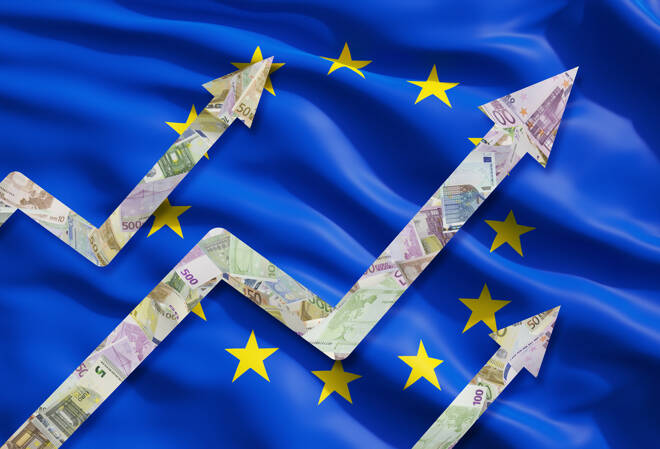Advertisement
Advertisement
European Equities: A Week in Review – 11/07/20
By:
After a bullish week, the markets will need to wait until Thursday for stats. That leaves the majors exposed to COVID-19, geopolitics, and U.S earnings.
The Majors
It was a bullish week for the European majors in the week ending 17th July. The DAX30 rose by 2.26% to lead the way, with the CAC40 and EuroStoxx600 gaining 1.99% and 1.60% respectively.
While economic data was in focus in the week, COVID-19 numbers and news updates remained a key driver.
A continued rise in the U.S and reintroduction of containment measures in California was market negative. Progress towards a COVID-19 vaccine, however, eased the pain in spite of the U.S continuing to hit new daily highs.
At the end of the week, EU leaders met to agree on the mechanics of the €750bn EU Recovery Fund. The markets were expecting some push back from the likes of Austria and the Netherlands amongst others…
Failure to agree would raise concerns over the durability of the economic recovery.
The Stats
It was a busier week on the Eurozone economic calendar.
Key stats included July’s ZEW economic sentiment figures for Germany and the Eurozone. May trade data and industrial production figures for the Eurozone were also in focus.
It was a mixed set of numbers, however.
Economic sentiment waned in Germany while seeing a marginal pickup in the Eurozone. Industrial production bounced back in May but came up short of forecasts.
The Eurozone’s trade surplus widened, though imports and exports were down significantly from May 2019.
According to Eurostat,
- Exports of goods to the rest of the world tumbled by 29.5% to €143.3bn when compared with May 2019.
- Imports from the rest of the world slumped by 26.7% to €133.9bn.
- In May 2019, the trade surplus had stood at €20.7bn.
- Intra-euro area trade tumbled by 27.9% to €125.3bn.
On the monetary policy front, the ECB stood pat on monetary policy, which was in line with expectations.
From the U.S
The stats were skewed to the positive once more. Manufacturing sector figures delivered mixed results for July. The NY Empire State Manufacturing Index saw a sizeable increase. The Philly FED Manufacturing Index fell back marginally, however.
Retail sales also continued to rise amidst the spike in new COVID-19 cases, with industrial production jumping by 5.4% in June.
The weekly jobless claims figures disappointed, however, with claims rising by 1.3m in the week ending 10th July.
From Elsewhere
A data deluge from China on Thursday weighed on the majors. While China’s economy rebounded sharply in the 2nd quarter, retail sales disappointed, raising some red flags at the end of the quarter.
The Market Movers
From the DAX, it was a bullish week for the auto sector. Daimler rallied by 7.13% to lead the way, with Volkswagen rising by 3.41%. BMW and Continental saw relatively modest gains of 1.28% and 1.98% respectively.
The upside for Daimler came from an announcement that it would have a smaller than anticipated operating loss in the quarter.
It was a mixed week for the banking sector, however. Commerzbank rose by 1.78% following a 10.35% jump from the previous week, while Deutsche Bank fell by 2.13%.
From the CAC, it was a bullish week for the banks. BNP Paribas and Soc Gen rose by 3.52% and by 3.77% to lead the way. Credit Agricole wasn’t far behind with a 2.94% gain.
It was also a bullish week for the French auto sector, with Peugeot and Renault rallying by 4.49% and by 6.42% respectively.
Air France-KLM and Airbus ended the week up by 2.66% and by 0.69% respectively.
On the VIX Index
It was a 5th consecutive week in the red for the VIX. In the week ending 17th July, the VIX fell by 5.90%. Following on from a 1.41% decline from the previous week, the VIX ended the week at 25.68.
The S&P500 and the Dow ended the week up by 1.25% and by 2.29%, while the NASDAQ fell by 1.08%.
It was a 3rd consecutive weekly gain for the S&P500, while the NASDAQ saw red for the 1st time in three weeks.
Over the week, economic data from China tested market risk sentiment late in the week. Economic indicators from the U.S also pointed to a possible stalling of the economic recovery amidst the spike in new COVID-19 cases.
Support did come from news of progress towards a COVID-19 vaccine, however.
While economic data was on the positive side in the week, a pullback in consumer sentiment in July was of concern.
The Week Ahead
It’s a relatively busy week on the Eurozone economic calendar. Key stats include July’s prelim private sector PMIs for France, Germany, and the Eurozone that are due out on Friday.
The Eurozone’s and Germany’s consumer confidence figures on Thursday will also garner plenty of attention.
With little for the markets to consider in the 1st half of the week, COVID-19 updates will remain a key area of focus. Expect any chatter on Brexit and from Beijing or Washington to also dictate market risk appetite.
Updates from Friday’s EU talks on the EU Recovery Fund will also need consideration.
From elsewhere
The U.S weekly jobless claims figures on Thursday and the private sector PMIs on Friday will also influence.
Corporate Earnings
With earnings season underway, earnings will also provide direction.
From the U.S, IBM (Mon), Coca-Cola (Tues), United Airlines (Tues), Microsoft (Wed), Tesla (Wed), Amazon.com (Thurs), Intel (Thurs), Twitter (Thurs), Chevron (Fri), and American Express (Fri) are amongst the big names.
Out of Germany, Daimler (Thurs) is the marquee name delivering earnings results.
About the Author
Bob Masonauthor
With over 28 years of experience in the financial industry, Bob has worked with various global rating agencies and multinational banks. Currently he is covering currencies, commodities, alternative asset classes and global equities, focusing mostly on European and Asian markets.
Advertisement
